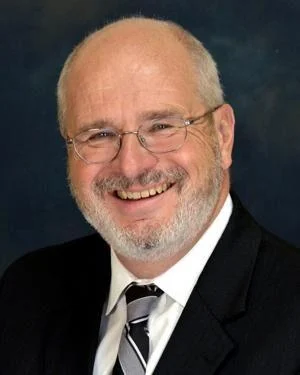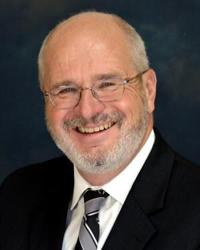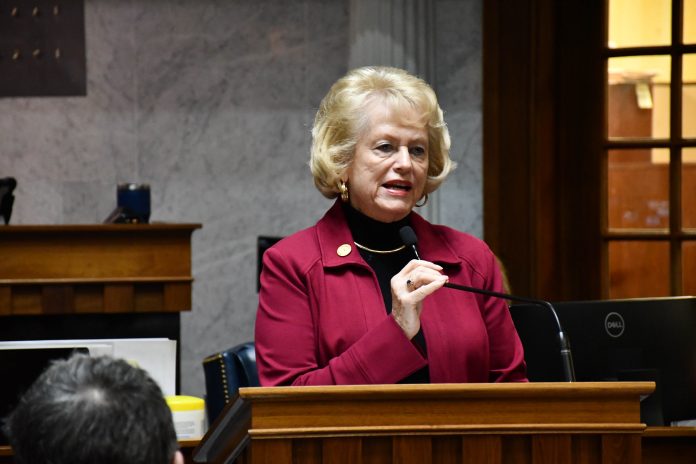Memorial Day is always officially designated as the last Monday in May. This year, Memorial Day is on Monday, May 29. On this day and the days leading up to it, Americans from across the country will gather at cemeteries and memorials to honor and remember the service members who gave the last full measure of devotion.
VA is hosting Memorial Day ceremonies at VA National Cemeteries and invites everyone to join Veterans and their families at these events, which will take place over Memorial Day weekend. The laying of flags and poppies and the moments of silence broken by the sounding of Taps will ensure that the sacrifices of these heroes are never forgotten. A full listing of more than 200 free ceremonies and other community Memorial Day events can be found below.
Additionally, 38 VA national cemeteries are featured at stops along the 20,000-mile relay march organized by Carry The Load.
Those who can’t attend events in person may also honor a fallen service member by leaving a tribute on the Veterans Legacy Memorial site. There you can view Veterans’ stories, decorations, and internment locations for each of the 4.5 million Veterans interred at VA national cemeteries, VA grant-funded state, territorial or tribal Veterans’ cemeteries, and certain National Park Service national cemeteries.
Also, check out this listing of year-round Veterans’ discounts with special Memorial Day discounts available at Walgreens and the National WWI Museum and Memorial.
FOOTNOTE: Â We update this list often, and event information does change. Verify event details with the host organization or location if possible.
- May 24, 2 p.m. ET – Overview of VA Caregiver Program for Military Caregiver Month – Online
- May, 24 3 p.m. ET – Commemorating Memorial Day with Veterans in Palliative and Hospice Care – Online
- May 24, 8 p.m. ET – Brick by Brick Weekly Community Stream – Online
- May 25, 12 p.m. ET – G.I. Jobs Virtual Job Fair – Online
- May 25, 1 p.m. ET – VeTALKX: Survivors Together – Memorial Day Q&A with VA and Community Partners – Online
- May 31, 2 p.m. ET – SBA VetCert Program Overview – Online
- June 1, 12 p.m. ET – Vetrepreneur Franchise Workshop – Online
Alabama
- May 23, 9 a.m. CT – VA National Cemetery Memorial Day Ceremony – Mobile, AL
- May 28, 1 p.m. CT – VA National Cemetery Memorial Day Ceremony – Ft. Mitchell, AL
- May 29, 8 a.m. CT – Team RWB Memorial Miles – Huntsville, AL
- May 29, 9 a.m. CT – VA National Cemetery Memorial Day Ceremony – Anniston, AL
- May 29, 9 a.m. CT – VA National Cemetery Memorial Day Ceremony – Montevallo, AL
- May 29 10:30 a.m. CT – Memorial Day Service – Huntsville, AL
- May 29, 5 p.m. CT – Memorial Day Concert – Fairhope, AL
Alaska
- May 27, 3:00 p.m. AKT – Team RWB Memorial Miles – Fairbanks, AK
- May 29, 9:30 a.m. AKT – Memorial Day Ceremony – Anchorage, AK
- May 29, 12 p.m. AKT – VA National Cemetery Memorial Day Ceremony – Sitka, AK
- May 29, 12 p.m. AKT – VA National Cemetery Memorial Day Ceremony – Fort Richardson, AK
Arizona
- May 27, 9 a.m. MT- Team RWB Memorial Miles – Tucson, AZ
- May 28, 9 a.m. MT – Team RWB Memorial Miles – Tucson, AZ
- May 29, 8 a.m. MT – VA National Cemetery Memorial Day Ceremony – Phoenix, AZ
- May 29, 11 a.m. MT – VA National Cemetery Memorial Day Ceremony – Prescott, AZ
- May 30, 8:30 p.m. MT – Team RWB Memorial Miles – Sierra Vista, AZ
Arkansas
- May 28, 2 p.m. CT – VA National Cemetery Memorial Day Ceremony – Fort Smith, AR
- May 29, 10 a.m. CT – VA National Cemetery Memorial Day Ceremony – Fayetteville, AR
California
- May 26, 10 a.m. PT –  Team RWB Memorial Miles – Whittier, CA
- May 27, 9 a.m. PT – VA National Cemetery Memorial Day Ceremony – Arvin, CA
- May 27, 9 a.m. PT – VA National Cemetery Memorial Day Ceremony – Dixon, CA
- May 29, 10 a.m. PT – VA National Cemetery Memorial Day Ceremony – San Diego, CA
- May 27, 10 a.m. PT –  Team RWB Memorial Miles – Riverside, CA
- May 28, 1 p.m. PT – VA National Cemetery Memorial Day Ceremony – San Diego, CA
- May 29, 9 a.m. PT – VA National Cemetery Memorial Day Ceremony – Santa Nella, CA
- May 29, 9:30 a.m. PT – VA National Cemetery Memorial Day Ceremony – San Bruno, CA
- May 29, 10 a.m. PT – VA National Cemetery Memorial Day Ceremony – Riverside, CA
- May 29, 10 a.m. PT – VA National Cemetery Memorial Day Ceremony – Los Angeles, CA
- May 29, 10:30 a.m. PT – VA National Cemetery Memorial Day Ceremony – San Francisco, CA
- May 29, 10:30 a.m. PT – VA National Cemetery Memorial Day Ceremony – San Bruno, CA
- May 29, 11 a.m. PT- Team RWB Memorial Miles – Huntington Beach, CA
- May 29, 1 p.m. PT – Team RWB Memorial Miles – Chino, CA

Colorado
- May 29, 10:45 am. MT – Team RWB Memorial Miles – Colorado Springs, CO
- May 29, 11 a.m. MT – VA National Cemetery Memorial Day Ceremony – Denver, CO
- May 29, 10 a.m. MT – VA National Cemetery Memorial Day Ceremony – Colorado Springs, CO
- May 29, 11 a.m. MT – VA National Cemetery Memorial Day Ceremony – Los Animas, CO
Connecticut
- May 29, 10 a.m. ET – Memorial Day Celebration – Hamden, CT
- May 29, 12 p.m. ET – Memorial Day Parade – Norwich, CT
Delaware
- May 29, 11 a.m. ET –  Veterans Memorial Day Parade and Ceremony – Lewes, DE
- May 29, 3 p.m. ET – Memorial Day Ceremony – Ellendale, DE
District of Columbia
- May 27, 10 a.m. ET – Team RWB Memorial Miles – Washington D.C.
- May 28, 5 p.m. ET – The National Memorial Day Concert – Washington, D.C.
- May 28, 2 p.m. ET – National Mall Memorial Day Parade – Washington, D.C.
Florida
- May 26, 6:30 p.m. – ET – Team RWB Memorial Miles – Tampa, FL
- May 27, 7:30 a.m. ET – Team RWB Memorial Miles – Daytona Beach, FL
- May 27, 9:30 a.m. ET – VA National Cemetery Memorial Day Ceremony – Jacksonville, FL
- May 27, 10 a.m. ET – VA National Cemetery Memorial Day Ceremony – Sarasota, FL
- May 27, 11 a.m. ET – Memorial Day Ceremony Honoring Veterans Who Died By Suicide – Tampa, FL
- May 28, 3 p.m. ET – VA National Cemetery Memorial Day Ceremony – Tallahassee, FL
- May 29, 9 a.m. ET – VA National Cemetery Memorial Day Ceremony – Pensacola, FL
- May 29, 10 a.m. ET – VA National Cemetery Memorial Day Ceremony – St. Augustine, FL
- May 29, 10 a.m. ET – VA National Cemetery Memorial Day Ceremony – Lake Worth, FL
- May 29, 11 a.m. ET – VA National Cemetery Memorial Day Ceremony – Bushnell, FL
- May 29, 11 a.m. ET – VA National Cemetery Memorial Day Ceremony – Mims, FL
- May 29, 11 a.m. ET –  VA National Cemetery Memorial Day Ceremony – St. Petersburg, FL
- May 30, 11 a.m. ET –  Memorial Day Ceremony Honoring Negro World War Veterans – Tampa, FL
- June 1, 11 a.m. ET – Orlando Veterans Job Fair – Orlando, FL
Georgia
- May 27, 9 a.m. ET – VA National Cemetery Memorial Day Ceremony – Canton, GA
- May 27, 9 a.m. ET – Team RWB Memorial Miles – Flowery Branch, GA
- May 29, 12 p.m. ET – VA National Cemetery Memorial Day Ceremony – Marietta, GA
Hawaii
- May 29, 8:30 a.m. HT – VA National Cemetery Memorial Day Ceremony – Honolulu, HI
- May 29, 8:30 a.m. HT– Memorial Day Ceremony – Honolulu, HI
Idaho
- May 29, 8 a.m. MDT – Team RWB Memorial Miles – Boise, ID
- May 29, 10:00 a.m. MDT – Memorial Day Ceremony – Nampa, ID
- May 29, 11:00 a.m. MDT – Memorial Day Ceremony – Hailey, ID
Illinois
- May 26, 9 a.m. – CT – Team RWB Memorial Miles – Glencoe, IL
- May 27, 10 a.m. CT – VA National Cemetery Memorial Day Ceremony – Mound City, IL
- May 28, 1 p.m. CT – VA National Cemetery Memorial Day Ceremony – Lake Forest, IL
- May 29, 10:45 a.m. CT – VA National Cemetery Memorial Day Ceremony – Rock Island, IL
- May 29, 11 a.m. CT – VA National Cemetery Memorial Day Ceremony – Danville, IL
- May 29, 2 p.m. CT – VA National Cemetery Memorial Day Ceremony – Springfield, IL
- May 29, 6 p.m. CT – VA National Cemetery Memorial Day Ceremony – Alton, IL
Indiana
- May 29, 11 a.m. CT – VA National Cemetery Memorial Day Ceremony – Marion, IN
- May 29, 11 a.m. CT – VA National Cemetery Memorial Day Ceremony – Indianapolis, IN
- May 29, 2:30 p.m. CT – VA National Cemetery Memorial Day Ceremony – New Albany, IN

Iowa
- May 29, 8:30 a.m. CT – Memorial Day Ceremony – Iowa City, IA
- May 29, 11 a.m. CT – VA National Cemetery Memorial Day Ceremony – Keokuk, IA
Kansas
- May 29, 9 a.m. CT – VA National Cemetery Memorial Day Ceremony – Leavenworth, KS
- May 29, 10:30 a.m. CT – VA National Cemetery Memorial Day Ceremony – Fort Scott, KS
- May 29, 11 a.m. CT – VA National Cemetery Memorial Day Ceremony – Fort Leavenworth, KS
Kentucky
- May 28, 2 p.m. ET – VA National Cemetery Memorial Day Ceremony – Lebanon, KY
- May 29, 11 a.m. ET – VA National Cemetery Memorial Day Ceremony – Nancy, KY
- May 29, 11 a.m. ET – VA National Cemetery Memorial Day Ceremony – Lexington, KY
- May 29, 11 a.m. ET – VA National Cemetery Memorial Day Ceremony – Louisville, KY
- May 29, 11 a.m. ET – VA National Cemetery Memorial Day Ceremony – Nicholasville, KY
- May 29, 2 p.m. ET – VA National Cemetery Memorial Day Ceremony – Louisville, KY
Louisiana
- May 29, 11 a.m. CT – VA National Cemetery Memorial Day Ceremony – Zachary, LA
- May 29, 10 a.m. CT – VA National Cemetery Memorial Day Ceremony – Pineville, LA
Maine
- May 27, 1 p.m. ET – VA National Cemetery Memorial Day Ceremony – Jonesboro, ME
- May 29, 9 a.m. ET – Memorial Day Parade and Concert – Scarborough, ME
- May 29, 9 a.m. ET – Memorial Day Parade – Scarborough, ME
Maryland
- May 26, 5 p.m. ET – VA National Cemetery Memorial Day Ceremony – Annapolis, MD
- May 29, 9 a.m. ET – Memorial Day Event – Rockville, MD
- May 30, 11 a.m. ET – VA National Cemetery Memorial Day Ceremony – Baltimore, MD
- May 31, 2 p.m. ET – Honoring National Military Appreciation Month – Baltimore, MD
Massachusetts
- May 25, 6 a.m. ET – Memorial Day Flag Garden – Boston, MA
- May 25, 10 a.m. ET – VA National Cemetery Memorial Day Ceremony – Devens, MA
- May 28, 11 a.m. ET – Memorial Day Service – Peabody, MA
- May 28, 1 p.m. ET – VA National Cemetery Memorial Day Ceremony – Bourne, MA
- May 29, 6 a.m. ET – Memorial Day Flag Garden – Boston, MA
Michigan
- May 26, 6 a.m. ET – Team RWB Memorial Miles – Bay City, MI
- May 27, 8a.m. ET – Team RWB Memorial Miles – Rockford, MI
- May 28, 1 p.m. ET – VA National Cemetery Memorial Day Ceremony – Holly, MI
- May 28, 2 p.m. ET – VA National Cemetery Memorial Day Ceremony – Augusta, MI
Minnesota
- May 29, 10 a.m. CT – VA National Cemetery Memorial Day Ceremony – Minneapolis, MN
- May 29, 11 a.m. CT – Team RWB Memorial Miles – Minneapolis, MN
Mississippi
- May 27, 8 a.m. CT – Team RWB Memorial Miles – Pearl, MS
- May 29, 10 a.m. CT – VA National Cemetery Memorial Day Ceremony – Biloxi, MS
- May 29, 2 p.m. CT – VA National Cemetery Memorial Day Ceremony – Corinth, MS
- May 29, 11 a.m. CT – VA National Cemetery Memorial Day Ceremony – Natchez, MS
- May 29, 7:15 p.m. CT – Team RWB Memorial Miles – Ocean Springs, MS
- June 1, 7:15 p.m. CT – Team RWB Memorial Miles – Ocean Springs, MS
Missouri
- May 27, 11 a.m. CT – VA National Cemetery Memorial Day Ceremony – Springfield, MO
- May 29, 10 a.m. CT – VA National Cemetery Memorial Day Ceremony – St. Louis, MO
Montana
- May 29, 9:30 a.m. MT – Memorial Day Parade – Bozeman, MT
- May 29, 12 p.m. MT – VA National Cemetery Memorial Day Ceremony – Laurel, MT
Nebraska
- May 29, 11:30 a.m. CT – VA National Cemetery Memorial Day Ceremony – Omaha, NE
- May 29, 2 p.m. CT – VA National Cemetery Memorial Day Ceremony – Maxwell, NE
Nevada
- May 27, 12 p.m. PT – Memorial Day Parade – Virginia City, NV
- May 29, 9 a.m. PT – Memorial Day Ceremony – Las Vegas, NV
New Hampshire
- May 29, 11:00 a.m. ET – Memorial Day Ceremony – Dover, NH
- May 29, 9 a.m. ET – Memorial Day Parade – Hopkinton, NH
- May 29, 4:30 p.m. ET – Memorial Day Ceremony and Community Picnic – Bow, NH
New Jersey
- May 27, 10 p.m. ET – Memorial Day Parade and Ceremony – Lawrenceville, NJ
- May 29, 11 a.m. ET – VA National Cemetery Memorial Day Ceremony – Beverly, NJ
New Mexico
- May 25, 9 a.m. MT – Veterans Benefits Seminar – Taos, NM
- May 29, 10 a.m. MT – VA National Cemetery Memorial Day Ceremony – Santa Fe, NM
- May 29, 10 a.m. MT – VA National Cemetery Memorial Day Ceremony – Fort Bayard, NM
- May 29, 9 a.m. MT – Team RWB Memorial Miles – Alamogordo, NM

New York
- May 24 6 p.m. ET – Team RWB Memorial Miles – Liverpool, NY
- May 27, 11 a.m. ET – VA National Cemetery Memorial Day Ceremony – Schuylerville, NY
- May 28, 11 a.m. ET – VA National Cemetery Memorial Day Ceremony – Brooklyn, NY
- May 28, 2 p.m. ET – VA National Cemetery Memorial Day Ceremony – Farmingdale, NY
- May 28, 2 p.m. ET – VA National Cemetery Memorial Day Ceremony – Corfu, NY
- May 29, 9:30 a.m. ET – VA National Cemetery Memorial Day Ceremony – Bath, NY
- May 29, 11 a.m. ET – VA National Cemetery Memorial Day Ceremony – Elmira, NY
- May 29, 1 p.m. ET – VA National Cemetery Memorial Day Ceremony – Calverton, NY
- May 30, 5 a.m. ET – Team RWB Memorial Miles – Syracuse, NY
- May 30, 5:30 p.m. ET – Team RWB Memorial Miles – Troy, NY
North Carolina
- May 27, 10:15 a.m. ET – Team RWB Memorial Miles – Raleigh, NC
- May 28, 7:30 a.m. ET – Team RWB Memorial Miles – Charlotte, NC
- May 29, 10 a.m. ET – VA National Cemetery Memorial Day Ceremony – Wilmington, NC
- May 29, 10 a.m. ET – VA National Cemetery Memorial Day Ceremony – Salisbury, NC
- May 29, 10 a.m. ET – VA National Cemetery Memorial Day Ceremony – Raleigh, NC
- May 29, 10 a.m. ET – VA National Cemetery Memorial Day Ceremony – New Bern, NC
- June 3, 11 a.m. ET – Veterans Appreciation Day – Kernersville, NC
North Dakota
- May 29, 3 p.m. CT – VA National Cemetery Memorial Day Ceremony – Harwood, ND
- May 29, 8 a.m. CT – Team RWB Memorial Miles – Bismarck, ND
Ohio
- May 28, 9 a.m. ET – NVMM Memorial Day Remembrance Ceremony – Columbus, OH
- May 28, 10 a.m. ET – Memorial Day Ceremony – Seville, OH
- May 28, 10 a.m. ET – VA National Cemetery Memorial Day Ceremony – Seville, OH
- May 28, 8 p.m. ET – Gold Star Family Candlelight Vigil – Columbus, OH
- May 29, 11 a.m. ET – VA National Cemetery Memorial Day Ceremony – Dayton, OH
- May 29, 2 p.m. ET – VA National Cemetery Memorial Day Ceremony – Columbus, OH
Oklahoma
- May 27, 8 a.m. CT – Team RWB Memorial Miles – Moore, OK
- May 29, 10 a.m. CT – VA National Cemetery Memorial Day Ceremony – Elgin, OK
- May 29, 10 a.m. CT – VA National Cemetery Memorial Day Ceremony – Ft. Gibson, OK
Oregon
- May 27, 11 a.m. PT – Team RWB Memorial Miles – Portland, OR
- May 29, 10 a.m. PT – VA National Cemetery Memorial Day Ceremony – Portland, OR
- May 29, 11 a.m. PT – Memorial Day Event – Salem, OR
- May 29, 11 a.m. PT – VA National Cemetery Memorial Day Ceremony – Roseburg, OR
- May 29, 11 a.m. PT – VA National Cemetery Memorial Day Ceremony – Eagle Point, OR
Pennsylvania
- May 27, 8:30 a.m. ET – Team RWB Memorial Miles – Pittsburgh, PA
- May 27, 9 a.m. ET – Team RWB Memorial Miles – Philadelphia, PA
- May 28, 11 a.m. ET – VA National Cemetery Memorial Day Ceremony – Bridgeville, PA
- May 28, 2 p.m. ET – VA National Cemetery Memorial Day Ceremony – Annville, PA
- May 29, 10 a.m. ET – VA National Cemetery Memorial Day Ceremony – Philadelphia, PA
- May 29, 10:45 a.m. ET – VA National Cemetery Memorial Day Ceremony – Newtown, PA
Puerto Rico
- May 25, 9 a.m. AST – Veterans Benefits Seminar – Arroyo, PR
- May 27, 9 a.m. AST – VA National Cemetery Memorial Day Ceremony – Morovis, PR
- May 29, 9 a.m. AST – VA National Cemetery Memorial Day Ceremony – Bayamon, PR
Rhode Island
- May 29, 11 a.m. ET – Memorial Day Parade and Celebration – Lincoln, RI
- May 29, 11 a.m. ET – Memorial Day Ceremony – Smithfield, RI
South Carolina
- May 29, 8 a.m. ET – Team RWB Memorial Miles – Greenville, SC
- May 29, 10 a.m. ET – VA National Cemetery Memorial Day Ceremony – Columbia, SC
- May 29, 10 a.m. ET – Memorial Day Ceremony – Fort Mill, SC
- May 29, 10 a.m. ET – VA National Cemetery Memorial Day Ceremony – Florence, SC
- May 29, 12 p.m. ET – VA National Cemetery Memorial Day Ceremony – Beaufort, SC
- May 29, 3 p.m. ET – Memorial Day Concert – Charleston, SC
South Dakota
- May 29, 11 a.m. CT – VA National Cemetery Memorial Day Ceremony – Sturgis, SD
- May 29, 8:30am CT – Memorial Day Program – Sioux Falls, SD
Tennessee
- May 27, 10 a.m CT – Team RWB Memorial Miles – Clarksville, TN
- May 28, 2 p.m. CT – VA National Cemetery Memorial Day Ceremony – Memphis, TN
- May 29, 11 a.m. CT – VA National Cemetery Memorial Day Ceremony – Madison, TN
- May 29, 11 a.m. ET – VA National Cemetery Memorial Day Ceremony – Mountain Home, TN
- May 29, 11 a.m. ET – VA National Cemetery Memorial Day Ceremony – Knoxville, TN
- May 29, 11 a.m. ET – VA National Cemetery Memorial Day Ceremony – Chattanooga, TN
- May 31, 6 p.m. ET – Team RWB Memorial Miles – Oak Ridge, TN
Texas
- May 26, 8 p.m. CT – Team RWB Memorial Miles – McAllen, TX
- May 27, 9 a.m. CT – Team RWB Memorial Miles – Universal City, TX
- May 27, 10 a.m. CT – Team RWB Memorial Miles – Temple, TX
- May 28. 12 p.m. CT – Carry the Load Memorial March – Dallas, TX
- May 29, 8 a.m. CT – Team RWB Memorial Miles – Harker Heights, TX
- May 29, 9 a.m. CT – VA National Cemetery Memorial Day Ceremony – San Antonio, TX
- May 29, 9 a.m. CT – VA National Cemetery Memorial Day Ceremony – Houston, TX
- May 29, 9 a.m. MT – VA National Cemetery Memorial Day Ceremony – El Paso, TX
- May 29, 11 a.m. CT – VA National Cemetery Memorial Day Ceremony – Dallas, TX
- May 29, 1 p.m. CT – Team RWB Memorial Miles – Harker Heights, TX

Utah
- May 29, 10 a.m. MT – Memorial Day Ceremony – Salt Lake City, UT
- May 29, 10 a.m. MT – Memorial Day Program – West Valley City, UT
Vermont
- May 27, 12 p.m. ET – Memorial Day Parade – Winooski, VT
- May 29, 11 a.m. ET – Memorial Day Commemoration – Vergennes, VT
Virginia
- May 25th – May 29th, 8 a.m. ET – Military Survivor Seminar and Good Grief Camp – Arlington, VA
- May 27, 8 a.m. ET – Team RWB Memorial Miles – Fredericksburg, VA
- May 27, 8 a.m. ET – Team RWB Memorial Miles – Stafford, VA
- May 28, 2:30 p.m. ET – VA National Cemetery Memorial Day Ceremony – Danville, VA
- May 28, 6:30 p.m. ET – Summer Blast Off at Wolf Trap – Vienna, VA
- May 29, 3 p.m. ET – Memorial Day Program at Military Women’s Memorial – Arlington, VA
- May 29, 9 a.m. ET – VA National Cemetery Memorial Day Ceremony – Hampton, VA
- May 29, 9 a.m. ET – VA National Cemetery Memorial Day Ceremony – Richmond, VA
- May 29, 9 a.m. ET – VA National Cemetery Memorial Day Ceremony – Hopewell, VA
- May 29, 11 a.m. ET – VA National Cemetery Memorial Day Ceremony – Winchester, VA
- May 29, 11 a.m. ET – VA National Cemetery Memorial Day Ceremony – Culpeper, VA
- May 29, 11 a.m. ET – VA National Cemetery Memorial Day Ceremony – Sandston, VA
- May 29, 11 a.m. ET – VA National Cemetery Memorial Day Ceremony – Triangle, VA
- May 29, 11 a.m. ET – VA National Cemetery Memorial Day Ceremony – Alexandria, VA
- May 29, 12 p.m. ET – VA National Cemetery Memorial Day Ceremony – Richmond, VA
Washington
- May 29, 11 a.m. PT – VA National Cemetery Memorial Day Ceremony – Port Townsend, WA
- May 29, 11 a.m. PT – VA National Cemetery Memorial Day Ceremony – Seattle, WA
- May 29, 1 p.m. PT – VA National Cemetery Memorial Day Ceremony – Kent, WA
- June 1, 11 a.m. PT – Naval Base Kitsap Area Veterans Job Fair – Bremerton, WA
West Virginia
- May 28, 1 p.m. ET – VA National Cemetery Memorial Day Ceremony – Grafton, WV
- May 29, 10 a.m. ET – VA National Cemetery Memorial Day Ceremony – Grafton, WV
- May 29, 10 a.m. ET – TEAM RWB Memorial Miles – Wheeling, WV
Wisconsin
- May 29, 9:25 a.m. CT – VA National Cemetery Memorial Day Ceremony – Milwaukee, WI
- May 29, 2:30 p.m. CT – VA National Cemetery Memorial Day Ceremony – Harshaw, WI
Wyoming
May 27, 8:15 a.m. MDT – Vets Talking to Vets at the National Museum of Military Vehicles – Dubois, Wyoming













